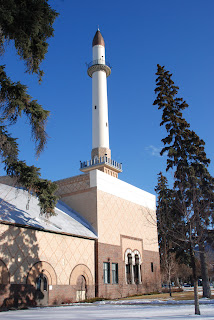5
 Edgerton County was formed in 1865, one year after Montana became a U.S. Territory. It was named for the first territorial governor, Sidney Edgerton. Edgerton, however, left Montana Territory and headed back home to Akron, Ohio, and in 1867 Edgerton County was renamed for the famed explorers, Lewis and Clark. Edgerton's life is a fascinating story, and he really deserves more credit that he is usually given, in that it was he who lobbied for the division of Idaho Territory and thus the creation of Montana Territory. Wikipedia has an article about him that is worth reading.
Edgerton County was formed in 1865, one year after Montana became a U.S. Territory. It was named for the first territorial governor, Sidney Edgerton. Edgerton, however, left Montana Territory and headed back home to Akron, Ohio, and in 1867 Edgerton County was renamed for the famed explorers, Lewis and Clark. Edgerton's life is a fascinating story, and he really deserves more credit that he is usually given, in that it was he who lobbied for the division of Idaho Territory and thus the creation of Montana Territory. Wikipedia has an article about him that is worth reading. The City-County Building
The City-County BuildingLewis and Clark County covers 3,461 square miles and is roughly 100 miles long north to south. The 2000 U.S. Census showed 55,716 county residents, giving it a population density of 16.1 people per square mile. The 2008 census estimate revealed a 9.3% growth, or 60,925. This puts the county in 6th place, state-wide. Most of the county's land area is rural, as is true for all of Montana. The county straddles the Continental Divide, and the northern reaches include much of the Bob Marshall Wilderness Area.
 The Cathedral of Saint Helena
The Cathedral of Saint HelenaThe county seat is Helena (pronounced with the accent on the first syllable). This pronunciation, which is a good way to tell whether someone is a Montanan or not, supposedly comes from the early miners who thought it was a helluva name for a town. Indeed, like much of western Montana, Helena got its start as a mining camp when the Four Georgians struck gold at Last Chance Gulch. This placer area was so rich that even today, the main street in downtown Helena is named Last Chance Gulch. By 1900, Helena had more millionaires per capita than any other US town. This is reflected in the magnificent homes that still exist on the west side of town.
Helena itself sits right on the southern edge of Lewis and Clark County, and lower taxes in neighboring Jefferson County (number 51) have meant that much of the regional growth has been in the southern neighbor, as Jefferson County became a bedroom community for Helena and was one of the fastest growing counties in Montana during the 80s and 90s.
Helena itself sits right on the southern edge of Lewis and Clark County, and lower taxes in neighboring Jefferson County (number 51) have meant that much of the regional growth has been in the southern neighbor, as Jefferson County became a bedroom community for Helena and was one of the fastest growing counties in Montana during the 80s and 90s.
 The Civic Center
The Civic CenterHelena is the only place in Montana to have a minaret, and that's on the building now used as the Civic Center. Built by the Shriners in 1920, the facility was given to the city and is now used for a wide variety of events. Last spring, after my employers hosted a conference on the Middle East, I drove a group of these visiting academics around western Montana. When we stopped at the Civic Center, I learned that the building is such a mish-mash of styles that no one knowledgeable in Arabic art and architecture would ever mistake it as one of their own. Who knew?
 Evening in the Rockies
Evening in the RockiesMontana is very active seismically, the fourth most active state in the U.S. As a rule, we don't get the big ones that folk in California, Alaska and Hawai'i fear, but every now and then.... A quake in 1935 did great damage to Helena, including major structural damage to the Cathedral of Saint Helena. The pictures collected by the University of Utah's Seismograph Stations show how badly the city was hurt.
Much of the arable land in the county sits along the Missouri River which flows in a northerly direction across the county, and is tapped for irrigation, power and recreation through three dams and their reservoirs located within fifty miles of Helena. Holter Dam, Hauser Dam, and Canyon Ferry Dam all harness the power of the Missouri and serve Helena and the Helena Valley. North of Helena, the river flows into a canyon in the Big Belt Mountains. This picturesque landscape caused Lewis and Clark to name it "The Gates of the Mountains." It is in this same area that in August, 1949, thirteen young firefighters lost their lives in the Mann Gulch fire. Norman Maclean, who wrote so eloquently about Missoula, fishing and religion in A River Runs Through It, has written equally eloquently about the fire in his book Young Men and Fire.
More information about Helena and Lewis and Clark County is available through their respective web sites and those of the Helena Convention and Visitor's Bureau and the Montana State Travel Site.
Much of the arable land in the county sits along the Missouri River which flows in a northerly direction across the county, and is tapped for irrigation, power and recreation through three dams and their reservoirs located within fifty miles of Helena. Holter Dam, Hauser Dam, and Canyon Ferry Dam all harness the power of the Missouri and serve Helena and the Helena Valley. North of Helena, the river flows into a canyon in the Big Belt Mountains. This picturesque landscape caused Lewis and Clark to name it "The Gates of the Mountains." It is in this same area that in August, 1949, thirteen young firefighters lost their lives in the Mann Gulch fire. Norman Maclean, who wrote so eloquently about Missoula, fishing and religion in A River Runs Through It, has written equally eloquently about the fire in his book Young Men and Fire.
More information about Helena and Lewis and Clark County is available through their respective web sites and those of the Helena Convention and Visitor's Bureau and the Montana State Travel Site.
Photo Information:
Lewis and Clark County Sign: Taken 3/26/2010. Nikon D80 DSLR, Nikkor 16-85 mm lens set at 78 mm. ISO 125, f /16.0, 1/8 second. Finished in Photoshop CS4.
City-County Building: Taken 2/21/2010. Nikon D80 DSLR, Nikkor 16-85 mm lens set at 18 mm. ISO 125, f /19.0, 1/90 second. Finished in Photoshop CS4.
Cathedral of Saint Helena: Taken 3/14/2010. Nikon D80 DSLR, Nikkor 16-85 mm lens set at 26 mm. ISO 125 , f /11.0, 1/45 second. Finished in Photoshop CS4.
Civic Center: Taken 3/7/2009. Nikon D80 DSLR, Sigma 18-50 mm lens set at 25 mm. ISO 400, f /11.0, 1/500 second. Finished in Photoshop CS4.
Evening in the Rockies: Taken 3/26/2010. Nikon D80 DSLR, Nikkor 16-85 mm lens set at 70 mm. ISO 125, f /16.0, 1/60 second. Finished in Photoshop CS4.
City-County Building: Taken 2/21/2010. Nikon D80 DSLR, Nikkor 16-85 mm lens set at 18 mm. ISO 125, f /19.0, 1/90 second. Finished in Photoshop CS4.
Cathedral of Saint Helena: Taken 3/14/2010. Nikon D80 DSLR, Nikkor 16-85 mm lens set at 26 mm. ISO 125 , f /11.0, 1/45 second. Finished in Photoshop CS4.
Civic Center: Taken 3/7/2009. Nikon D80 DSLR, Sigma 18-50 mm lens set at 25 mm. ISO 400, f /11.0, 1/500 second. Finished in Photoshop CS4.
Evening in the Rockies: Taken 3/26/2010. Nikon D80 DSLR, Nikkor 16-85 mm lens set at 70 mm. ISO 125, f /16.0, 1/60 second. Finished in Photoshop CS4.




No comments:
Post a Comment